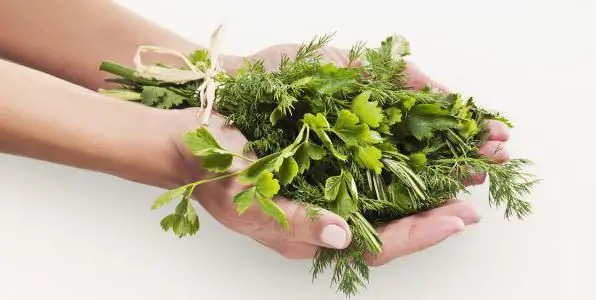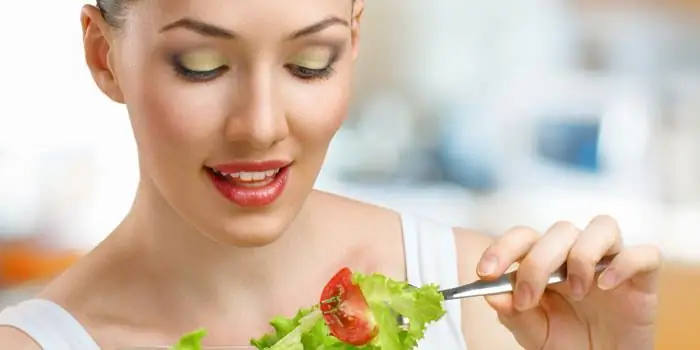2026 Author: Isabella Gilson | [email protected]. Last modified: 2025-01-23 12:50:31
It is almost impossible to find products without added preservatives these days. Unfortunately, this is a kind of retribution so that we can eat fruits and vegetables that do not grow in our latitudes, or buy seasonal products all year round. But how harmful are the different "E"s really? And if the packaging of dried fruits says "preservative E220" - should it be thrown away or can it be eaten?

First, let's find out what this supplement is. E220, a preservative, is sulfur dioxide. A gas with a specific pungent odor. This chemical element prevents food spoilage, in particular the darkening of vegetables and fruits. What is it for? First of all, of course, to preserve the "presentation" of products. Preservative E220 is used to process dried fruits, vegetables, fruits, added to wines, marmalade, marshmallows, jams, vegetable purees and canned food …
It would seem that such a widespread use of a preservative should indicate its low harm. But! Sulfur dioxide is contraindicated in people with kidney disease. And of course, you should not give marshmallows, which is addedpreservative E220, child. Especially if the baby is prone to allergies.
Frequent consumption of products with the addition of this preservative can cause poisoning. Symptoms - cough, runny nose, hoarse voice. Sometimes E220 can cause allergic complications.

Sometimes a person buys products of the same brand without even reading the ingredients and not suspecting that he is poisoning himself! For example, a lover of a bright and tasty vegetable lecho, who prefers this product to a nondescript analogue, risks becoming a victim of a preservative …
E220 is very common in dried fruits. It is so laid down by nature that over time, dried fruits tend to darken, wrinkle and eventually "lose face". But cunning producers use the E220 preservative - and dried apricots retain their bright orange color, raisins look amber-transparent, and prunes just ask to be put into the mouth, shining with black sides …
That's just we eat not only "beauty", but also all the chemistry that has absorbed the fruits designed to be useful! It turns out a twofold situation - it seems that we eat vitamins, and at the same time we harm ourselves.

Is it possible to avoid a collision with the E220? Probably not at all - preservatives have firmly entered our lives. But you can try to minimize their number in your menu. So, if you see the inscription "preservative E220" on the package with sprats in tomato sauce, put the jar aside. Surely there is a product without sulfur dioxide, though not as beautiful in appearance, but less harmful.
And howfind out what E220 is added to dried fruits? "Natural" dried fruits don't look very nice, just imagine how an apricot should look after it has dried on a branch without outside interference. Too bright and beautiful dried fruits should arouse suspicion - obviously the preservative E220 "visited" here! And of course, read the packaging carefully, sometimes we just don’t pay attention to honestly indicated supplements.
It is believed that the E220 preservative can be "washed off" if vegetables, fruits and dried fruits are thoroughly washed. But it's better not to take risks and choose a product without the addition of dangerous chemistry - God saves the safe, and we must take care of our own he alth and the he alth of our loved ones!
Recommended:
Preservative E220 in wine. The effect on the body of sulfur dioxide

The preservative E220 in wine is considered to be a food additive. It is added to foods to kill bacteria. It has another, more complete name - sulfur dioxide. This preservative can be found in almost all wines, no matter the price range. It is commonly believed that this supplement causes headaches and other not-so-pleasant he alth problems. In the article, we will consider how harmful E220 is and how it affects the body as a whole
Semi-finished products from fish: types and composition. Storage of semi-finished fish products

Semi-finished fish products are very popular among housewives who want to save a little time on cooking. Today we’ll talk about what semi-finished fish products are, how they differ, how fish is processed before production, and how to properly store such food
Products of plant origin: list. Plant-based vs. Animal-based Products: A Comparison of Advantages and Disadvantages

Which foods should be on our table every day, and which ones should appear only occasionally? What should be in excess or, conversely, a small amount? Today we want to make a list of products of plant and animal origin and compare their benefits for the body
Heme iron: the concept of what products contain. Animal products

Together with food, two types of iron enter the human body: heme and non-heme. What these elements are and what significance they have for the body are some of the most frequently asked questions. It remains to figure out what these types of iron are
Products containing oxalic acid: list of products, composition, nutritional value

What foods contain oxalic acid and why is it harmful. The benefits of this substance for the human body. List of foods with the least amount of oxalic acid. How to get rid of oxalates and why they are dangerous. Causes of urolithiasis

